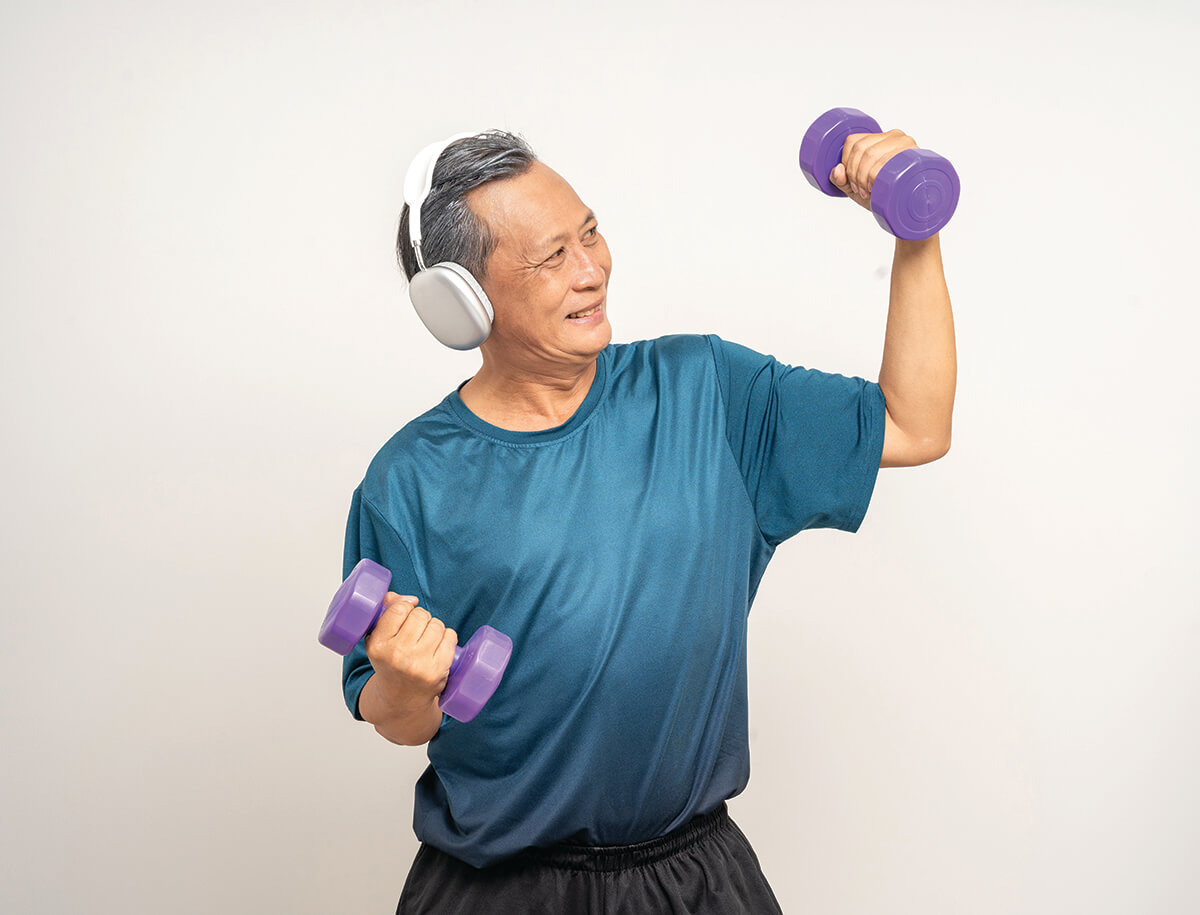Special Section
Fit After 55
Fitness experts say start slow and find your tribe.
By Julekha Dash — December 2024
Linette Teerlink recalls training one client in her Columbia gym, Progressive Athletics. In an imaging scan, the woman’s osteoporosis made her spine look much older than her sixty-something years. Teerlink knew that, with exercise, the client could build back bone. After incorporating a regular workout routine and making some nutrition shifts, the client’s bone density got much better, something the American Academy of Orthopaedic Surgeons says is one of the benefits of regular exercise.
The average life expectancy for men and women is 78 and, according to the U.S. Census, people will live another eight years longer, to 86, by 2060. That gives retirees more time to enjoy their post-career years. But improving the quality of those years means devoting time to staying active instead of sitting glued to screens. Staying active can lower your risk of heart disease, stroke, Type 2 diabetes, cancer, and many other ailments, according to the U.S. Department of Health and Human Services. A study in the Journal of the American Medical Association also shows that even light activity can boost brain health, lowering the risk of dementia.
“Exercise helps you slow the aging process and prevents the diseases associated with aging,” says Teerlink, whose gym clients are largely in their 50s and early 60s. “If you are exercising in the right way, you can slow [aging] down significantly.”
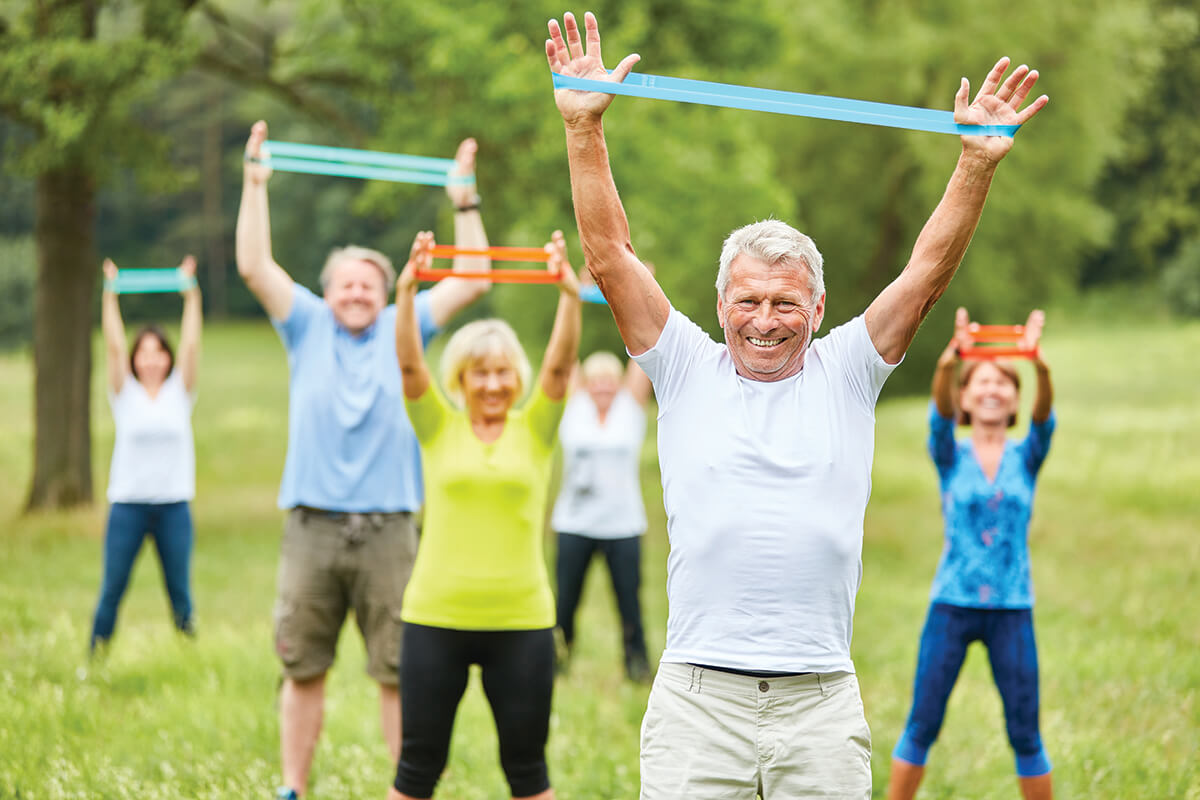
WHERE DO YOU BEGIN?
With anything, it’s important to talk to your doctor before starting any exercise regime. The American College of Sports Medicine recommends at least 30 minutes of exercise five days a week. Fitness experts say a well-rounded exercise routine should include cardiovascular movement (like walking), weight training, and exercises like yoga or tai chi that boost balance and flexibility.
“As we age, we get stiffer, and our muscles aren’t as fluid as before,” says Julie Sega, fitness manager at Erickson Senior Living’s Oak Crest community in Parkville. “Concentrating on your flexibility helps you move better.” Improving balance can help prevent falls, and numerous studies have shown a correlation between balance and mortality. Sega recommends incorporating balance into your everyday routine, such as standing on one leg while brushing your teeth.
Teerlink also recommends strengthening your core—the central part of your body, including your hips, pelvis, and stomach—with planks and other exercises. “It can be really dangerous to start picking up heavy weight if the area between your shoulders and your hips is not strong enough to support strength training.”
Sitting up and down in a chair, or chair stands, provides a great workout for the triceps, glutes, arms, and core, Sega says. “You’re going to be able to move and groove and keep going for, you know, well into your 90s. We’ve got people in their hundreds who work out here,” Sega says.
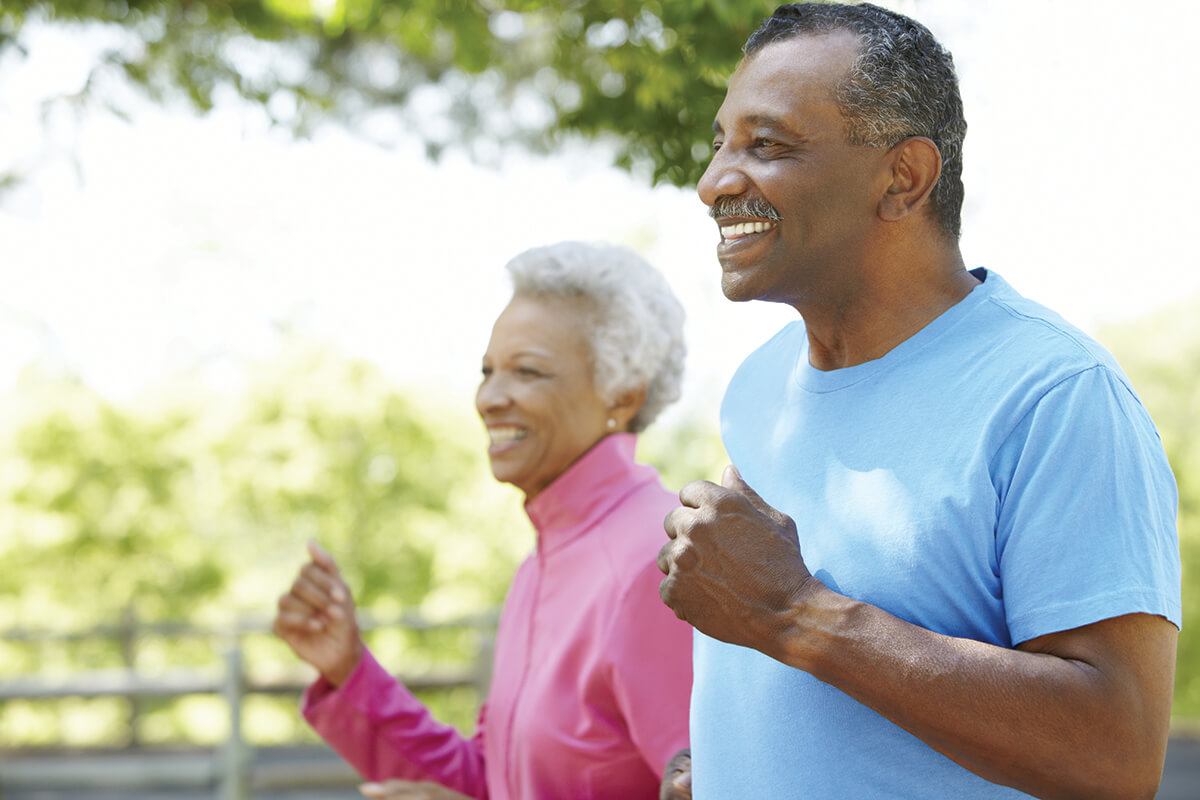
INCORPORATING MOVEMENT
Teerlink says to start with a personal trainer’s assessment of your flexibility and mobility, so you know what to work on. If you don’t have one, she suggests one simple test: How well can you sit or lie on the floor and get back up using one hand? If it’s a struggle, you might have stiff ankles, knees, hips, or back.
Starting with low-impact activities like walking will strengthen your hips, posture, and mobility without added pressure on the joints.
“I recommend everybody walk in addition to strength training because it heals back pain and it relieves stress, and it’s good for your cardiovascular fitness,” says Teerlink, whose claim is backed up by research from the National Institutes of Health.
Swimming and other water exercises can offer movement with less joint stress. Erickson offers several classes in the pool, including an aqua fit class that mixes cardio and weights and a tai chi water class. “Water takes off all that impact on your body,” Sega says. “No matter what kind of condition you have, being in the water just helps you move” because it takes away all that resistance, Sega says.
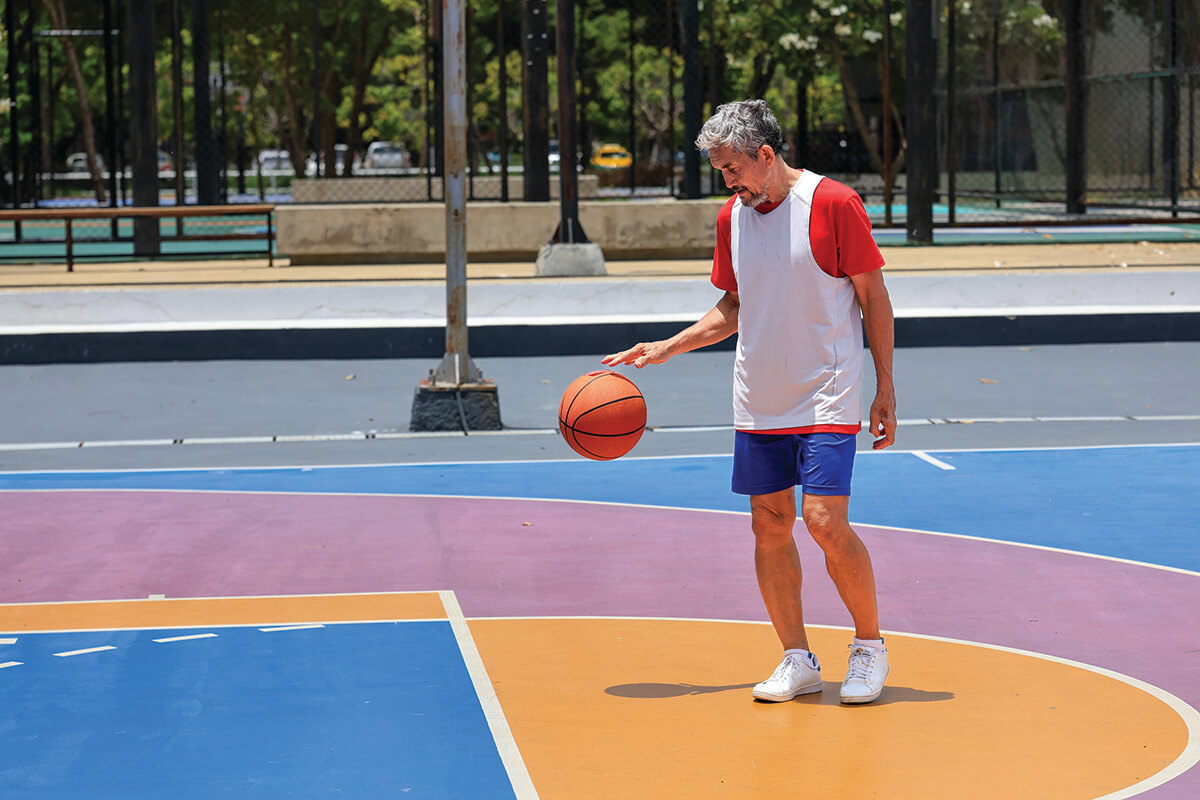
Residents at Erickson have access to Wellbeats, an app with exercise programs, including yoga and weights, high- and low intensity workouts, meditation, and nutrition information. But Sega says seniors who don’t live there or belong to a gym can find free fitness classes on YouTube.
One advantage of taking a class or working with a trainer is that you can find ways to adjust exercises according to your ability. Modify workouts to avoid injuries, says Vanessa Meadows, owner of Freedom Fitness in Eldersburg, who has taught classes at Howard County 50+ Centers. “Modifications can be really beneficial” if you’re just starting to exercise or coping with injuries. Take for example a jumping jack, which is typically performed by extending both legs simultaneously. It can be modified by moving one leg at a time to avoid the bouncing movement that adds pressure on the knees. “Go into movement with the idea that you’re going to modify to your specific needs,” Meadows says.
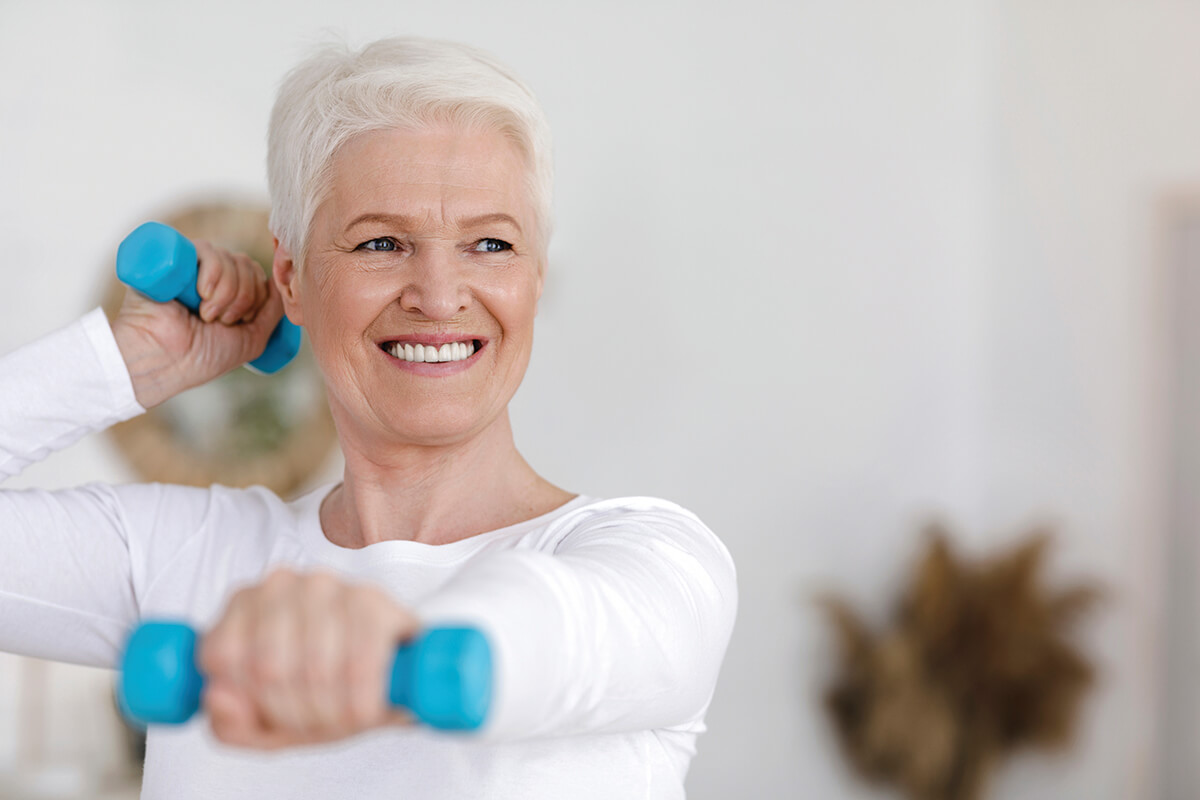
A HOLISTIC APPROACH
Experts say that improving overall well-being involves more than exercise; it depends on creating a foundation of healthy lifestyle habits. “Think about your sleep, nutrition, how you cope with stress,” Teerlink says.
Erickson’s Embrace Well Being program covers all dimensions of wellness—physical, mental, and even spiritual health. “Embracing your well-being just means taking together all those components,” Sega says. The components not only include exercise but also reducing stress while boosting emotional health, nutrition, sleep, and what Sega calls “connections.” That includes relationships, spirituality, and a sense of belonging, which is key, especially if you’re no longer seeing co-workers in an office. Loneliness and social isolation put you at higher risk for depression, cognitive decline, and heart disease, according to the National Institute of Aging.
Finding others committed to movement can help guide and inspire your fitness routine. That could mean joining a gym, doing downward dogs in a yoga class, hiring a trainer, or taking up a sport like the fast-growing pickleball. “Oftentimes, when you feel isolated, your motivation can drop,” Meadows says. “It can be motivating to be part of a community where people know who you are. They’re expecting you to be there, maybe they’re asking you if 5400 Vantage Point Road you’re coming to class that day.”
